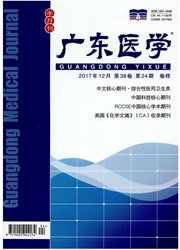

 中文摘要:
中文摘要:
目的建立体外培养人羊膜上皮细胞的方法,观察体外培养的羊膜上皮细胞的生物学特性。方法取足月剖宫产术后羊膜,经胶原酶和胰蛋白酶消化后,获取的羊膜上皮细胞接种于含10%胎牛血清培养基中进行原代和传代培养,探索其合适的培养条件,用倒置显微镜观察培养的人羊膜上皮细胞体外生长的特征。用苏木精-伊红染色、扫描电镜和细胞角蛋白免疫组织化学染色的方法对培养细胞进行形态学观察和鉴定。结果人羊膜上皮细胞可以在体外成功的培养传代,体外可连续传8~10代。体外培养细胞呈多角形,长满后呈上皮细胞特有的铺路石样外观。扫描电镜观察细胞表面有丰富的微绒毛。细胞角蛋白keratin单克隆抗体染色阳性。结论人羊膜上皮细胞在体外可成功进行原代和传代培养,体外培养的人羊膜上皮细胞在一定时间内可维持增殖能力。
 英文摘要:
英文摘要:
Objective To establish a method of culturing human amniotic epithelial cells in vitro and to study its biologic features. Methods A piece of amniotic membrane taken from an uncomplicated elective caesarean section was digested by collagenase and trypsin respectively. The amniotic epithelial cells were seeded in DMEM (dulbecco's modified eagle's medium) containing 10% fetal bovine serum for primary culture and passage. The optimal culture condition and feature of the amniotic epithelial cells were studied in vitro. The cultured cells were investigated morphologically by Hematoxylin- eosin staining, scanning electron microscope (SEM) and were identified by cytokeratin immunohistochemistry. Results Human amniotic epithelial cells were successfully cultured and passaged in vitro, and could be passaged successively for 8 - 10 times. Most of the cultured cells were polygon and of typical slabstone - like appearance. Many microvilli were observed on cell sur faces by SEM. Cytokeratin staining was positive. Conclusion Human amniotic epithelial cells can be successfully primary cultured and passaged in vitro, and the cells can proliferate for a certain period.
 同期刊论文项目
同期刊论文项目
 同项目期刊论文
同项目期刊论文
 期刊信息
期刊信息
